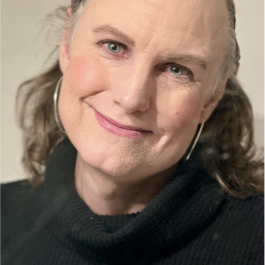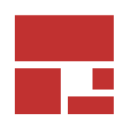Building the brightest future for your company will, naturally, involve some teamwork. And when it comes to honing your best business ideas and building products that can execute on them, healthy collaboration between engineers and designers is particularly essential.
This can be easier in theory than in practice. Designers and engineers often approach their work in different ways, with analytical versus intuitive styles resulting in conflicts, confusion and potential miscommunication that can slow down a project.
What’s required for these left-brain and right-brain thinkers to come together? At Granular, an agricultural software development company focused on helping farmers be more profitable and efficient, engineering manager Jillian Priese poses the answer in one simple word: trust.
“It is easy for engineers and designers to question one another’s motivations and abilities without it,” Priese explained. “When trust is present, it makes all the difference in the world.”
From investing time upfront in team members getting to know each other before a project kicks off, to establishing mutual respect that will facilitate direct feedback and easier collaboration every step of the way, there are many ways to get designers and engineers to see eye-to-eye. We asked higher-ups at Granular and three other successful tech companies how they’ve improved collaboration between these two vital teams.
Chime is a fintech company that helps its members avoid bank fees, save money automatically, and lead healthier financial lives. Not relying on overdraft, monthly service, minimum balance or other member fees, its model focuses on member value with a goal of delivering financial peace of mind to millions of Americans.
What is the biggest challenge you see designers and engineers run into when working together, and how have your teams overcome it?
When we’re in the early discovery phase of design, it is important to have a voice from our engineering partners in the room, in order to inform both the experiential design and the technical design of the product we are aiming to build. Often, it is difficult to know precisely when and how to involve engineering at this phase of work.
To ensure we get ahead of this potential friction point, we have design reviews at each stage of the design process with cross-functional partners — including engineering. This allows us to incorporate their perspective into our design decisions and give them the direction they need to begin development.
Designers and engineers bring very different perspectives to the work they do. What can these teams do to better understand each other’s space?
I always say that design solutions don’t have to come from designers, and that designers should facilitate the best solutions. When we have engineers in the room during the conceptual phase of our design process, they can think about solutions differently, with the end build in mind.
Getting that perspective early allows us the space to think creatively within our constraints rather than taking away piece-by-piece from a solution that had not initially considered all the constraints we needed to work within.
What is a strategy you’ve found to be particularly effective for creating and maintaining alignment among teams?
We always build with the intention of collaborating with our engineering partners during design sprints. As a recent example, we hosted a week-long design sprint to create the design system for our enterprise products. We needed to dedicate a portion of that sprint to align our approach, terminology and implementation in a way that could be replicated on the front-end implementation side of that system, and so we had a full-day workshop with our engineering team to align their side with ours.
Through farm management software and data science, Granular helps growers build and sustain stronger, more profitable and efficient farm businesses.
What is the biggest challenge you see designers and engineers run into when working together, and how have your teams overcome it?
Trust. It is easy for engineers and designers to question one another’s motivations and abilities without it. When trust is present, it makes all the difference in the world.
I have two examples. Previously, we had lost trust between design and engineering and needed to work closely with a designer to ship a new feature. In this case, we invited the designer to scrum with the team to establish rapport and mutual respect. As a result, the designer and the engineers ended up working more closely on the implementation. Recently, we started working with designers from outside of mobile. This time, they reached out to us to give us a preliminary tour of their work and thinking of how to implement the new feature. Everyone shared frank and honest opinions about this cross-platform solution, as if they’d worked together before, though they hadn’t. It was pretty cool.
In both cases, the key was being vulnerable and trusting, even when it feels a little scary. For my part, I created the space and expectation that we’d put in the time and the work to become a united team. Nothing is lost throughout doing this, but much can be gained.
Designers and engineers bring very different perspectives to the work they do. What can these teams do to better understand each other’s space?
I have to say, again, trust. Teams, or multiple teams, are always groups of people working together. For any collaborative project to work, all participants have to trust each other, want to solve the problem and be willing to work together. Trust starts with humility and building rapport. Two teams that have never worked together must spend time getting to know each other. When this happens, the engineers and designers begin to see each other as teammates.
When this step is short-changed, simple questions like “What were you thinking with this design?” or “Why is this implementation so hard?” feel more like accusations than simple queries. Specifically, build teams through building rapport, and by bringing focus to the shared problem. No trust falls required!
But, seriously, investing a little time in getting to know each other will go a long way toward having designers and engineers voluntarily surface their spaces to their counterparts. If they don’t, arrange presentations by designers on what their space looks like, and vice versa. We often feature talks given by members of other teams about what they do and how they work.
What’s one effective strategy you’ve found for creating and maintaining alignment between teams?
Prepare, consider, share, get feedback, adjust, communicate openly, and get buy-in every step of the way. Preparation is a big deal; this applies to building teams and making sure goals are achievable and measurable. Sharing is critical. Get ideas out there. Listen to comments, questions, and other feedback. Process that feedback and adjust accordingly. This is respecting the team players, and it is super important!
As preparation proceeds, keep teams up to date and continue to listen. Did I mention listening? Work to make sure all parties to the alignment are on board before even really kicking off a project. It is a lot of work to be aligned, but this is at once the tracks, grease and the rocket fuel of the project — you go nowhere without it.
At Granular, we’ve needed to adjust how we do releases. I listened to my team for what was wrong, and I considered what we could do to change the process. I shared my thoughts as they evolved. Peer and director feedback showed that we could commit more time to releases. All throughout hearing this, I was open and listening. When I announced a change to our approach, everyone was already on board and excited to have a more effective strategy for our releases. But it did not stop there; we’ve iterated over the process a few times since.
Wish is a mobile e-commerce platform that connects hundreds of millions of consumers with the widest selection of products delivered directly to their doors, in hopes of providing widespread access to the most affordable and entertaining shopping experience on the planet.
What is the biggest challenge you see designers and engineers run into when working together, and how have your teams overcome it?
Designers and engineers both bring unique skills to the table, which always leads to an excellent cohesive solution but sometimes leads to an impasse. This happens mainly when the goal is not very clear from the start. Designers and engineers have their own ways of rationalizing a problem space.
Still, these complementary skill sets. When brought together with shared background knowledge such as user insights, research and data into a specific problem space, they always collaborate to produce a brilliant solution.
I encourage my teams to always include an engineering voice from the start, in service of co-defining the problem space, brainstorming ideas and documenting clear goals. Being aligned on these goals and objectives before designers start exploring ideas is important; you always want to think as one team rather than “design team vs. engineering team.” Other tips: over-communicating designs via prototypes or clear documentation, recording your demos, and asking for feedback. Share every progress with the core team and document every edge case to eliminate surprises between the two groups. Be aligned, as simple as it sounds. All collaborators need visibility over timelines and deliverables.
Designers and engineers bring very different perspectives to the work they do. What can these teams do to better understand each other’s space?
Designers are great storytellers; they can articulate the customer’s point of view in a very emphatic way while keeping business goals in mind. By sharing stories, designers can bring more depth to their solutions; engineers need to hear this depth, to possess that shared understanding.
I encourage designers to share examples that speak the “code” language of engineers. For instance, “I saw this behavior or interaction in these apps or websites.” Engineers can quickly understand and provide more constructive feedback from the get-go if they’re being spoken in code.
I also think having a shared objective and clearly sharing every stage of the design progress helps to foster collaboration between the two groups. Additionally, it’s been helpful for designers to show two to three design explorations intended to solve a single problem. This way, working on a solution feels more collaborative, as teams decide on the best one. Always being flexible is essential. Things can come up at the last minute. If designers are not overly attached to their designs and are willing to branch out, it usually helps keep the project or feature moving.
What’s one effective strategy you’ve found for creating and maintaining alignment between teams?
I entrust the designers on my team to collaborate with stakeholders, as they interact regularly. My goal is for each designer to become the domain expert in their own vertical, which means they know the product inside and out, maintain a great relationship with collaborators and explore all angles in order to solve problems.
Designers have weekly design syncs with each product vertical. The product manager and engineering lead join that sync; the designer would present what they have been working on in the past week, with the expectation that the designer has been aligned with their product and engineering counterpart.
If that’s the case, nothing is surprising. The purposes of these syncs are to resolve pending open product and design questions, to ensure cross-functional collaborations, to provide more context from other verticals’ syncs and to alert the designers of any potential dependencies, since product teams tend to focus on their product feature most of the time.The hope is that, in this way, designers bridge the gaps between verticals. I find syncs like these very helpful.
With backing from top Silicon Valley investors, Human Interest exists to close the retirement savings gap, empowering all businesses no matter their size to safeguard the financial futures of their employees.
What is the biggest challenge you see designers and engineers run into when working together, and how have your teams overcome it?
One of the biggest challenges I have seen is around expectations for timing. Engineering is always feeling the pressure of deadlines and having more on their plate than can possibly be done in a given timeframe. Design feels those same pressures, but they are usually felt more at the beginning of a project; they need time to do discovery and research in advance of development kicking off.
There is frustration on both sides when designers are being rushed to deliver or engineers start their work without design. Not factoring in that time can mean not taking into account the entire user experience and building something that doesn’t address the problem — or worse yet, building something that introduces new problems. Overcoming this requires planning and strong collaboration at the onset of a project, as well as throughout. Strong collaboration can deliver immense value to the company and, more importantly, to customers. There’s value in taking time to do design discovery upfront — before jumping into development.
Designers and engineers bring very different perspectives to the work they do. What can these teams do to better understand each other’s space?
Our designers lead with user empathy, helping to identify the best solutions and experience for both external and internal users. If we’re building a new internal tool, it may be easiest from an engineering perspective to append it to an existing system. However, if that results in users needing to go through more steps or jump between different tools, that solution is not truly aligned with solving the problems our users have. By bringing the design and engineering perspectives together, it helps us land on the right short-term solutions and to put us on the right track with the bigger iterations and enhancements we can plan out for the future.
One way we can help with alignment between designers and engineers is in the design share-out, which ideally involves using an end-to-end prototype or demonstrating the phases of the different components. I find these work best when they’re consistently scheduled before any development work begins, and when they include members across our design, engineering and product teams. That way, we have a shared understanding of the challenge and the solution. Most importantly, we have a rationale for why we’re choosing this approach to solve the problem.
What’s one effective strategy you’ve found for creating and maintaining alignment between teams?
Regularly involving engineers in user feedback sessions helps build empathy for the user and further builds alignment around the solution these teams are building toward. This helps the engineers to collaborate actively with designers, especially when these feedback sessions are regularly scheduled.












